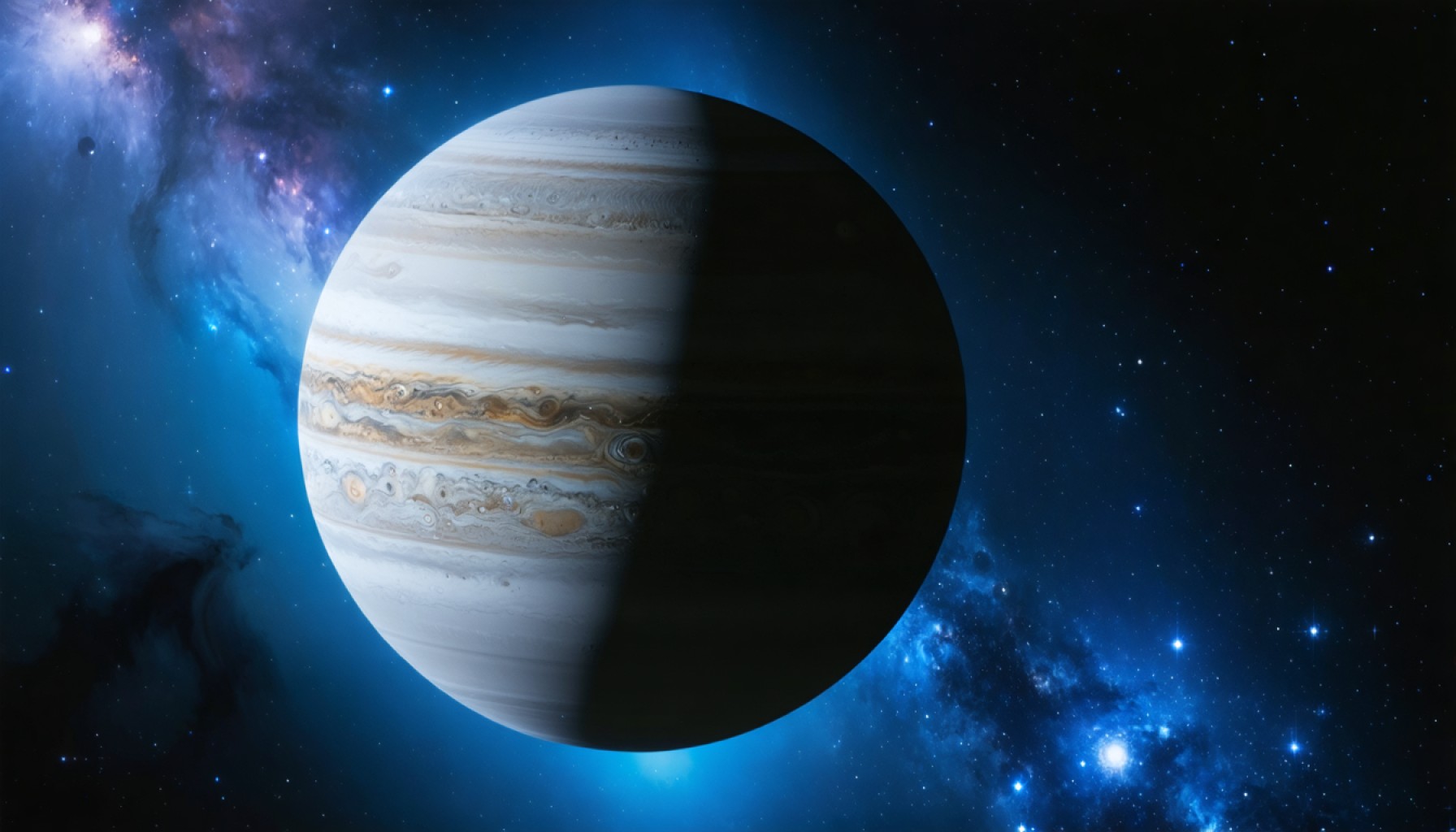- Astronomers have discovered intriguing atmospheric gases on K2-18b, an exoplanet 8.6 times the mass of Earth, which could suggest the presence of life.
- The James Webb Space Telescope detected methane and carbon dioxide, along with sulfur-based gases typically produced by Earth’s marine life, on K2-18b.
- K2-18b orbits a red dwarf star in the constellation Leo and resides within the habitable zone, where conditions may allow liquid water to exist.
- The exoplanet is classified as a potential Hycean world, possibly supporting microbial life within its hydrogen-rich atmosphere and oceans.
- Despite promising signs, scientists like Nikku Madhusudhan urge caution and emphasize the need for further observations and analysis to confirm these initial findings.
- This research propels our understanding of extraterrestrial life and sparks hope for answering whether life exists beyond Earth.
Peering across the cosmic ocean, scientists have captured a glimpse into the potentially life-bearing realm of K2-18b, a giant exoplanet orbiting a dim red dwarf star in the constellation Leo. Towering at 8.6 times the mass of Earth, this enigmatic world has long tantalized astronomers with its possibilities. Amidst the tapestry of hydrogen and water, researchers now believe they have uncovered molecules that might hint at the presence of life.
Using the formidable James Webb Space Telescope, a team of astronomers led by Nikku Madhusudhan at the University of Cambridge has delved into K2-18b’s atmospheric secrets. They discovered intriguing chemical signatures, including traces of methane and carbon dioxide, that suggest more than mere cosmic happenstance. Yet even more compelling, the Webb telescope detected sulfur-based gases — the likes of which, on Earth, are exclusively churned out by marine life in our oceans.
K2-18b rests snugly within its star’s habitable zone, a celestial region where conditions are just “Goldilocks” enough for liquid water to exist. This factor, combined with new atmospheric findings, has elevated the exoplanet to the status of a potential Hycean world — enveloped in a thick hydrogen-rich atmosphere with oceans potentially brimming with microbial life.
Yet, the road to confirming these tantalizing clues is fraught with challenges. Madhusudhan emphasizes caution over certainty, acknowledging the necessity of meticulous testing to unravel the mysteries of K2-18b. Scientists ponder whether unknown chemical processes could mimic signs of life, stressing the importance of additional observations to solidify their hypothesis.
This journey into the depths of space reflects the relentless quest for answers to one of humanity’s oldest questions: Are we alone in the universe? If life on K2-18b is indeed a reality, it could transform our understanding of life’s tenacity and adaptability beyond the confines of Earth.
As astronomers yearn for more telescope time to scrutinize the distant world, their work underscores a pivotal moment in our cosmic exploration. Should K2-18b’s secrets be unveiled, it could signify a profound moment in human history, redefining our conception of the living universe and our place within it.
Unveiling the Secrets of K2-18b: A Potentially Life-Bearing Exoplanet
Exploring K2-18b’s Atmospheric Mysteries
K2-18b, a colossal exoplanet situated within the habitable zone of a faint red dwarf star in Leo, has captivated astronomers with its potential for hosting life. At 8.6 times the mass of Earth, this world is not your average rocky planet. It’s classified as a “Hycean,” marking it as a planet with large oceans under a hydrogen-rich atmosphere. The James Webb Space Telescope’s recent findings of methane and carbon dioxide, coupled with intriguing sulfur-based gases, hint at biological activity, akin to what we find on Earth in oceanic environments.
Atmosphere, Life Signs, and Challenges
The discovery of these gases, essential to known life processes, raises possibilities but also challenges. Are these chemical signatures evidence of life, or could other unidentified natural processes mimic them? As cautioned by lead researcher Nikku Madhusudhan from the University of Cambridge, extensive testing and further observations are crucial to validate these initial findings.
How to Understand the Implications
1. Analyze Spectra: Study the spectral data collected by Webb for consistency with known biological processes.
2. Comparative Study: Investigate similar exoplanetary atmospheres to identify patterns or anomalies.
3. Collaborative Research: Engage with international teams for broader perspective and data cross-verification.
Market Forecasts & Industry Trends
The discoveries from K2-18b are fueling renewed interest and investment in exoplanet research. The growth of space technology firms and the search for Earth-like planets is trending upwards, with projected market expansions in astronomical equipment and data analysis technology. Companies like SpaceX and Blue Origin may eventually play roles in deploying advanced probes for deeper exploration.
Technology Comparisons
– James Webb vs. Hubble Telescope: While Hubble provided foundational data, Webb’s advanced infrared capabilities offer a more detailed observation of chemical compositions.
Considerations and Limitations
1. Distance Factor: At over 120 light-years away, direct exploration is currently impossible, limiting our data to telescope observations.
2. Data Interpretation: Possibility of false positives due to unknown photochemical processes needs careful consideration.
3. Stellar Activity: The host red dwarf’s variability could affect atmospheric conditions on K2-18b, complicating life detection efforts.
Pros & Cons Overview
– Pros:
– Potential for life, raising profound existential implications.
– Expands understanding of planet types (Hycean worlds).
– Drives technological advancement and interest in astronomy.
– Cons:
– Current technological limitations prevent immediate verification.
– Significant investment needed for further space missions and telescope time.
– Interpretation is complex and could be subject to bias or error.
Actionable Recommendations
1. Support Space Initiatives: Advocate for funding and resources for continued space exploration research.
2. Education and Outreach: Engage the public through science communication to maintain interest and support.
3. Collaborative Projects: Encourage multinational efforts to share data and techniques, fostering innovation and faster breakthroughs.
Final Thoughts
The findings on K2-18b represent a beacon of potential discovery that could redefine humanity’s understanding of life beyond Earth. As researchers continue to probe these mysteries, the importance of cross-disciplinary collaboration grows ever more essential. Stay informed and involved in the movements shaping the future of space exploration.
For more on space and astronomy advancements, visit NASA and ESA.



